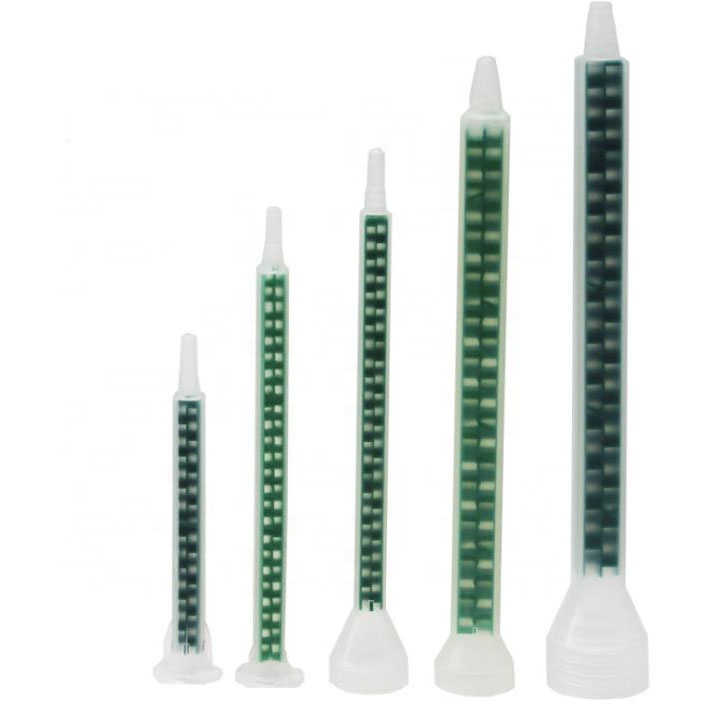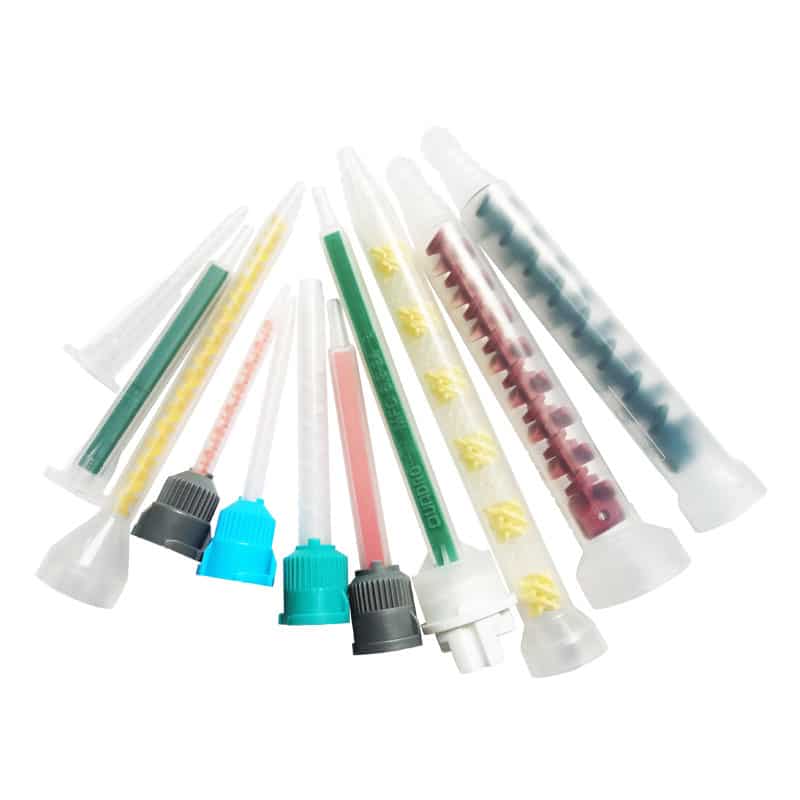Epoxy is a popular material used for a variety of applications, including flooring, coating, and adhesive bonding. When working with epoxy, the mixing process is critical to ensure that the final product is strong and durable. There are two main methods for mixing epoxy: using a mixing nozzle or manual mixing. In this blog, we will explore the pros and cons of each method to help you determine which one is right for your project.
Epoxy Mixing Nozzle



The epoxy mixing nozzle is a specialized tool that attaches to the end of a cartridge containing the two-part epoxy. The nozzle is designed to mix the two components together as they are dispensed from the cartridge. The mixing process is automatic and requires no additional effort from the user.
Pros of Epoxy Mixing Nozzle:
-
Consistency:
Because the mixing process is automated, the epoxy is consistently mixed in the correct ratio, resulting in a more uniform and consistent product.
-
Speed:
Using a mixing nozzle can significantly reduce the time required to mix the epoxy. The process is quick and easy, allowing you to move on to the application process faster.
-
Convenience:
Mixing nozzles are easy to use and require no additional tools or equipment. This makes them a convenient option for DIY projects or small-scale applications.
-
Waste Reduction:
Mixing nozzles can help reduce waste by ensuring that the entire contents of the cartridge are used. This can save you money and reduce the amount of leftover epoxy that needs to be disposed of.
Cons of Epoxy Mixing Nozzle
-
Initial Investment:
Epoxy mixing nozzles require a specialized tool to use, which can be an additional expense if you don’t already own one.
-
Limited Mixing Time:
Mixing nozzles have a limited working time, meaning you must work quickly to apply the epoxy before it hardens.
-
Limited Control:
Mixing nozzles don’t offer as much control over the mixing process, which can be a disadvantage when working on larger or more complex projects.
Manual Mixing
Manual mixing is the traditional method for mixing epoxy. It involves manually measuring and mixing the two components of the epoxy using a mixing container and a mixing tool.
Pros of Manual Mixing:
-
Control:
Manual mixing allows for greater control over the mixing process. You can adjust the ratio of the two components to achieve the desired consistency and strength.
-
Flexibility:
Manual mixing allows you to mix small batches of epoxy, which can be useful for small-scale applications or when working in confined spaces.
-
Cost:
Manual mixing can be a more cost-effective option for larger projects. You can purchase epoxy in bulk and mix only what you need, reducing waste and saving money.
-
Customization:
Manual mixing allows you to customize the color and texture of the epoxy by adding pigments and fillers.
Cons of Manual Mixing
-
Inconsistency:
Manual mixing can be more difficult to achieve consistent results, especially if you’re new to working with epoxy.
-
Time-Consuming:
Manual mixing can be a time-consuming process, especially if you’re working with larger batches of epoxy.
-
Messy:
Manual mixing can be a messy process, requiring additional cleanup and disposal of used mixing containers and tools.
Conclusion
Both epoxy mixing nozzles and manual mixing have their advantages and disadvantages, and the method you choose will depend on your specific project requirements. If you’re looking for convenience, consistency, and speed, an epoxy mixing nozzle may be the best option. If you require greater control and customization or are working on a larger project, manual mixing may be the better choice. Ultimately, the key to successful epoxy mixing is to follow the manufacturer’s instructions and recommendations, regardless of the mixing method you choose. This will ensure that you achieve the desired strength and durability of the final product.
No matter which method you choose, be sure to take the necessary safety precautions when working with epoxy. Wear protective gear such as gloves and goggles, and work in a well-ventilated area to avoid inhaling fumes.
